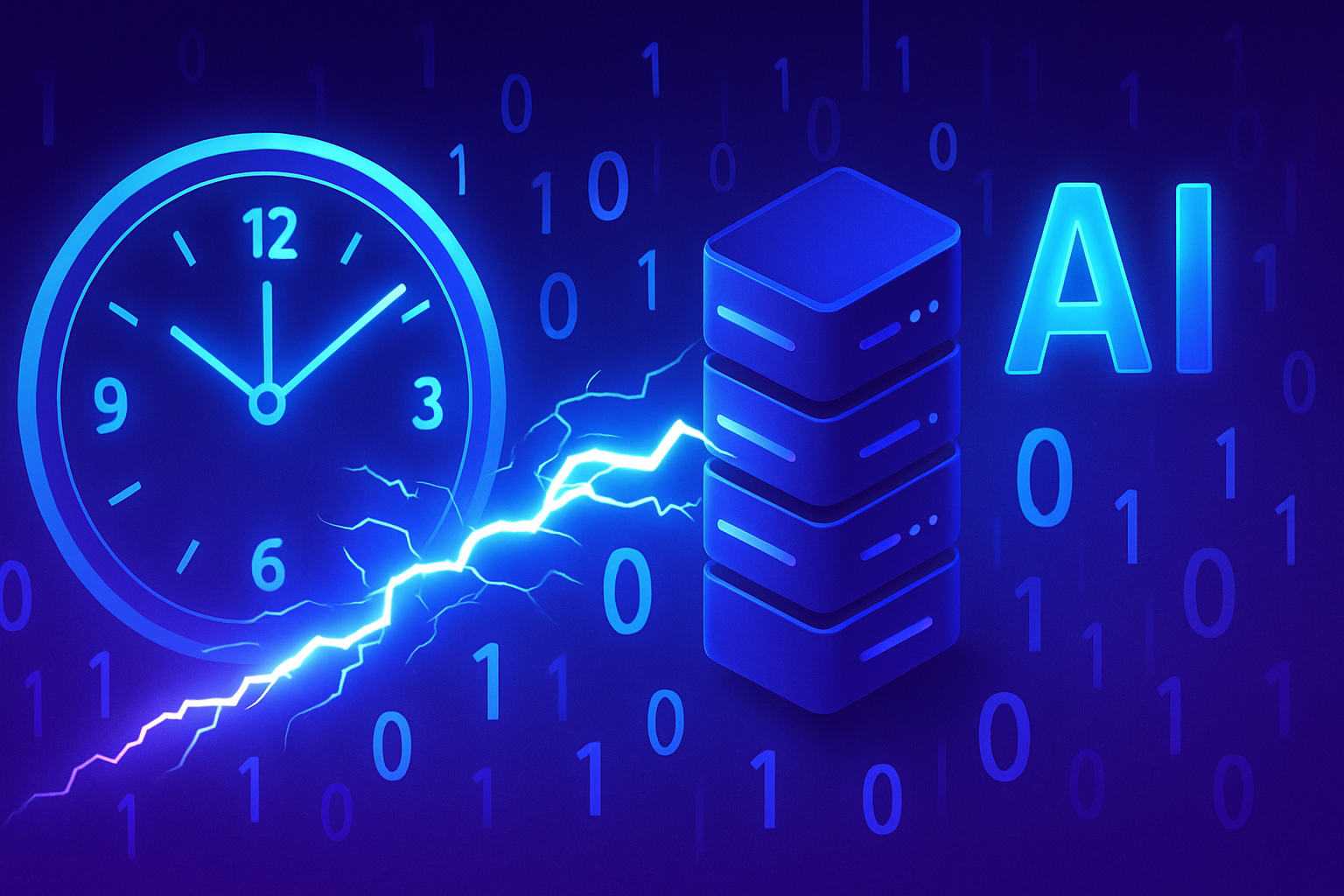The data revolution is reaching unprecedented speeds, disrupting the technological landscape. CrateDB redefines data infrastructure to meet the demands of artificial intelligence systems. Today’s companies face a challenge: to gather relevant insights in record time. Shifting from minute to millisecond paves the way for intelligent and responsive operations, fostering innovation across various sectors. The stakes of agility and precision have never been more crucial. Optimized data management transforms decision-making capabilities and captures the very essence of performance.
An infrastructure suited for future demands
A recent article from CIO.com highlights a major challenge: the current data infrastructure cannot meet the future needs of artificial intelligence (AI). Chief Information Officers (CIOs) must rethink how to scale, not only in terms of volume but also in speed and efficiency. In light of this issue, CrateDB steps forward as an innovative solution, positioning itself as a “unified data layer for analysis, search, and AI.”
Effective data processing
The majority of computing systems rely on batch processing conduits or asynchronous pipelines. This model presents limitations in terms of both speed and efficiency. According to Stéphane Castellani, Vice President of Marketing at CrateDB, it becomes essential to reduce the time separating data production from its consumption. CrateDB proves to be a suitable response, capable of providing snapshots of relevant data in a handful of milliseconds, even in the face of complex data volumes.
Four-step process for AI
A blog article details CrateDB’s innovative process, which acts as the “connective tissue” between operational data and AI systems. This process unfolds in four major steps: data ingestion, real-time aggregation, providing data to AI pipelines, and finally, activating feedback loops between models and data. The speed and variety of data are essential elements, with Castellani noting a reduction in query times from several minutes to a few milliseconds.
Specific applications in manufacturing
In the manufacturing sector, real-time machine telemetry collection enhances predictive maintenance models. This system offers companies the ability to optimize their processes and reduce unplanned downtime. Moreover, CrateDB can assist staff in the event of a malfunction. By generating a precise error message, it enables querying a virtual assistant, capable of providing the necessary manuals and instructions for real-time problem resolution.
Anticipating future AI needs
AI is evolving rapidly. The shape it will take in a few months remains uncertain. Organizations are looking to develop fully autonomous AI workflows. However, recent research by PYMENTS Intelligence reveals that the manufacturing sector, integrated within the goods and services industry, is lagging behind. CrateDB collaborates with Tech Mahindra to bring autonomous AI solutions to the automotive, manufacturing, and smart factory sectors.
Model Context Protocol (MCP)
Stéphane Castellani expresses genuine enthusiasm for the Model Context Protocol (MCP), which standardizes how applications provide context to large language models (LLMs). He draws an analogy to the trend of enterprise APIs that emerged twelve years ago. The MCP server from CrateDB, still in the experimental phase, acts as a bridge between AI tools and analytic databases. “We apply the same approach as with APIs, but for LLMs,” he specifies.
Future prospects and collaborations
The collaboration with Tech Mahindra represents one of the strategic axes for CrateDB. Castellani states that the company is focusing on its fundamentals: performance, scalability, and investment in data ingestion from an increasing number of sources. The primary goal remains to reduce latency, both at the ingestion and query levels. The range of applications for these technologies looks promising.
Participation in key events
Stéphane Castellani will speak at the AI & Big Data Expo Europe. His presentation will focus on the theme “Bringing AI to real-time data – Text2SQL, RAG, and TAG with CrateDB.” He will also participate in the IoT Tech Expo Europe, where he will discuss smarter IoT operations through real-time analysis of wind farms and AI-guided diagnostics.
Frequently asked questions about CrateDB and AI
How does CrateDB reduce data processing time for AI?
CrateDB optimizes performance by reducing query times from several minutes to milliseconds, thus enabling immediate access to necessary data for AI systems.
What are the main features of CrateDB for real-time data processing?
CrateDB acts as a unified data layer by offering real-time ingestion, instant aggregation, and fast data provisioning to AI pipelines.
What types of data can CrateDB process?
CrateDB can handle a wide range of data formats, making it a suitable choice for high and varied volumes needed for AI.
How does CrateDB assist predictive maintenance in industry?
By collecting real-time telemetry from machines, CrateDB allows for better analysis and improvement of predictive maintenance models, facilitating proactive interventions.
What roles do knowledge assistants play in factories using CrateDB?
Knowledge assistants utilize CrateDB to provide quick and accurate information on specific machine errors, helping operators respond effectively with the appropriate documentation.
Why is the Model Context Protocol (MCP) important for AI and CrateDB?
The MCP standardizes how applications provide context to large language models, facilitating their integration with CrateDB and thus enhancing the efficiency of autonomous AI workflows.
How does CrateDB compare to other data management solutions for AI?
Unlike other systems that often rely on batch pipelines, CrateDB focuses on real-time efficiency and latency reduction, which is essential for modern AI needs.
Why is it crucial for CIOs to reassess data infrastructure in the age of AI?
CIOs must consider solutions that not only scale in size but also adapt intelligently to future data processing demands, or they risk being left behind.






